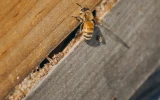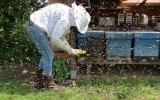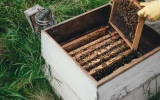How To Extract Propolis From a Beehive (The Right Way)
Propolis is a valuable substance produced by bees, and it can be extracted from a beehive with a few simple steps. Learn the right way to extract propolis from a beehive, including the tools and materials needed, the safety precautions to take, and the method for harvesting and storing it.
The best way to extract propolis from a beehive is to use a bee brush or tool to carefully remove the propolis from the beehive walls. Be sure to wear protective clothing and gloves, and never smoke around the beehive. Once the propolis has been collected, it can be melted and stored for future use.
Be sure to have a hive tool or bee brush on hand when you plan to extract propolis, as it is the most useful tool in this process. Let's discover the right way to collect, process, and store this powerful bee product for its natural health benefits.
Summary
- Before you start extracting propolis, prepare the necessary types of equipment, such as a beekeeping suit and gloves for protection.
- Use the smoke to calm the bees and be safe from their stings before going into their hives.
- Use a hive tool to scrape off the propolis in the most gentle and careful way possible.
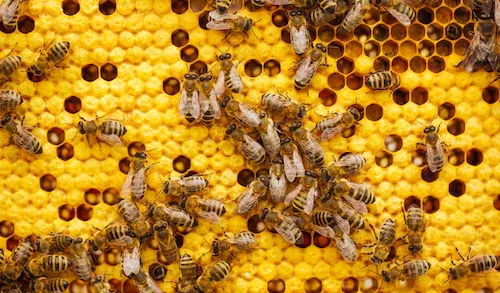
The Right Way to Extract Propolis from A Beehive
Before beginning the process of extracting propolis from a beehive, it is essential to protect yourself with a beekeeping suit and gloves. And with all the necessary equipment, you're now ready to start harvesting. Here’s a six-step process for safely extracting propolis from a beehive.
1. Gather the necessary equipment
When starting beekeeping, it is important to have the correct tools and equipment to ensure the safety of both the beekeeper and the bees.
Beekeeping suit and gloves
One of the most important pieces of equipment for a beekeeper is a beekeeping suit, which is designed to protect the beekeeper from the stings of the bees. The suit should cover the entire body and include a veil to cover the face. It is also important to wear gloves to protect the hands when handling the hives.
Smoker
The smoker is important for calming the bees before handling the hive. It helps reduce the risk of getting stung by bees. The smoker should be filled with fuel, such as wood chips or pine needles, and then ignited to create smoke.
Hive tool
The beekeeper should also have a hive tool, which is a multipurpose tool used for opening, prying, and scraping the hive. The hive tool is made of metal and has a sharp, pointed end. It is used to separate the frames and to scrape the sides of the hive if necessary.
Container for the propolis
Finally, the beekeeper should have a container for extracting propolis from the beehive. The container should be airtight and have a lid that can be securely sealed.
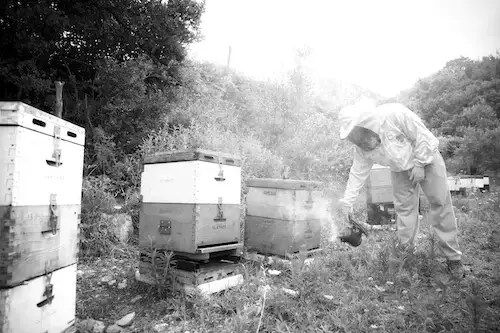
2. Wear your beekeeping suit and gloves
A beekeeping suit is a white coverall with a veil over the head, protecting from stings while also allowing you to observe the bees.
It is important to ensure that the suit is well-fitting, as the loose-fitting fabric can allow bees to get in and sting you. The gloves should be thick, preferably leather, to protect from stings and provide a firm grip on the hive frames.
3. Smoke the hive
Smoking the hive is a safe and effective way to calm and tranquilize the bees before extracting propolis. The smoke helps to reduce the bees' aggression and calm them down. It is important to be careful and to avoid blocking the entrance of the hive, as this will reduce the effectiveness of the smoke.
The smoke should be applied slowly and evenly, filling the entire hive with smoke. This should be done for about 30 seconds to ensure the bees are adequately tranquilized. Once the smoke has been applied, the propolis can then be extracted from the hive.
4. Locate the combs that contain propolis
Once the hive is opened, the beekeeper should inspect the frames to determine which combs contain propolis. Propolis is usually found in the upper frames or the region of the hive closest to the entrance. If the hive is overcrowded, propolis may appear in multiple frames. The frames should be carefully inspected to ensure the propolis is not mixed with wax or honey.
To do this, examine the beehive and search for combs that have a dark, waxy substance attached to them. Propolis will often be found in crevices and corners of the hive and along the edges of the comb. In some cases, propolis may also be found inside the cells of the honeycomb. Additionally, propolis may also be found on the frames of the beehive and the top bars.
To ensure that the combs containing propolis are identified correctly, it is important to inspect the beehive carefully. Look for signs of propolis, such as a sticky or waxy residue, on the combs and other areas of the hive.
If the propolis is visible, it can be scraped off with a tool or your finger. If it is present, it will feel sticky or waxy. Once the combs containing propolis have been identified, they can be properly extracted from the beehive.
5. Scrape off the propolis
To harvest propolis from a beehive, the first step is to scrape off the propolis from the comb using a hive tool. When scraping off the propolis, it is important to use the hive tool with caution and to scrape gently.
Scraping too hard can damage the comb and the honeybees in the hive. The bees will often attempt to defend their hive and swarm the beekeeper. To ensure the beekeeper’s safety and the safety of the hive, it is important to use the hive tool with caution and to scrape off the propolis as gently and carefully as possible.
6. Place the container of propolis in a cool, dry place
When extracting propolis from a beehive, it is important to ensure that you store it properly. After you have extracted the propolis, the best way to store it is in a sealed container in a cool and dry place. This will prevent the propolis from becoming too warm and melting, or from becoming too moist and becoming moldy.
When storing your container of propolis, avoid storing it in direct sunlight or a high-humidity environment like a bathroom. You should also ensure that the container is tightly sealed to prevent any moisture from entering.
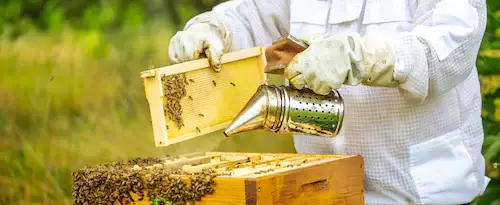
If you are not ready to use the propolis right away, you can store it for up to a year in ideal conditions. Make sure to check on your propolis every few months to make sure it is still in good condition. If you do notice any changes in the consistency of the propolis, it is best to discard it and extract a new batch.
Storing your propolis in a cool, dry place is essential to ensure that it maintains its quality and is safe to use. By taking the proper precautions, you can ensure that your propolis will be ready when you are ready to use it.
Propolis Produced by Bees
Propolis is a sticky, resinous substance produced by honey bees from the buds of certain trees and plants. It is collected by the bees and used to line the hive and build comb cells. The color of propolis varies from yellowish-brown to dark brown, and the texture can range from sticky and tacky to hard and brittle. It has a strong, pleasant smell and a bitter taste.
Propolis is rich in essential oils, vitamins, minerals, and antioxidants. It is known to have a broad spectrum of antimicrobial and anti-inflammatory properties and has been used to treat a variety of conditions, including skin disorders, sore throats, and colds.
